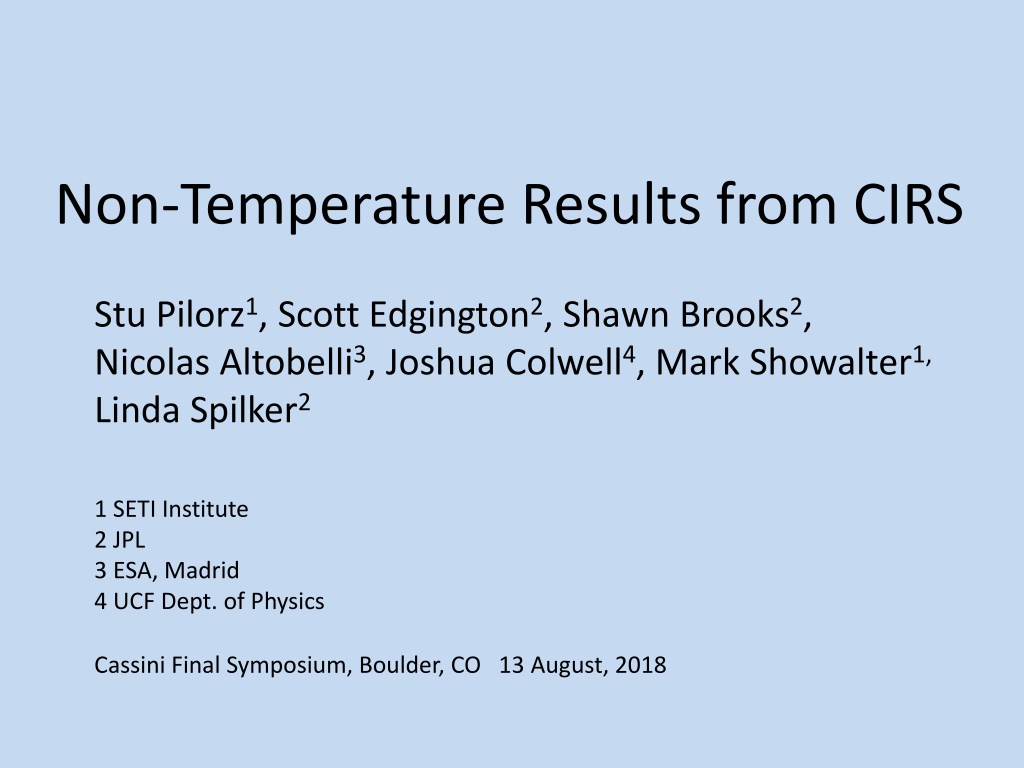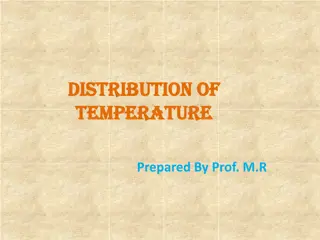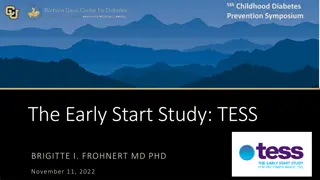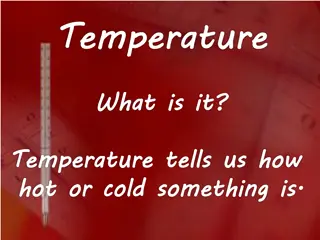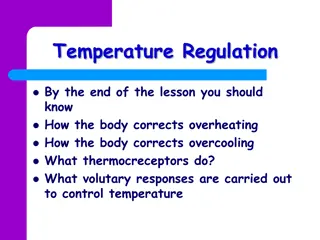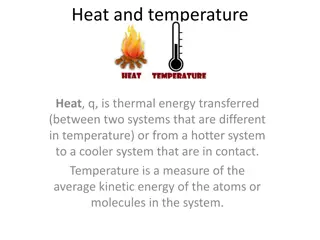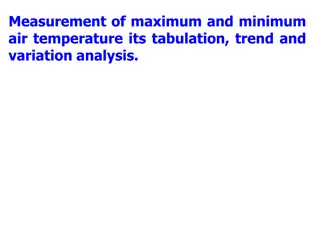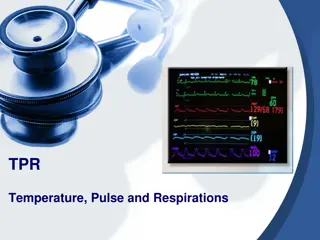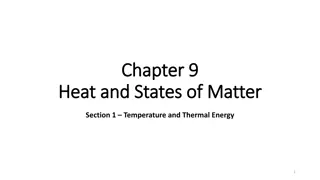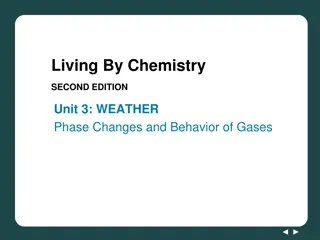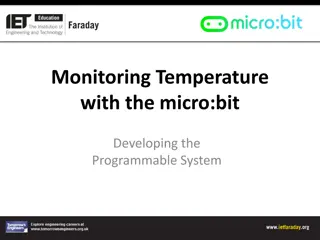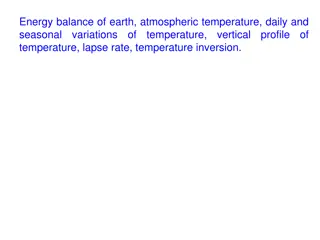Non-Temperature Results From CIRS Research Symposium
Rings around Icy Moons are studied through detailed observations and analyses by a team of researchers from various institutions. The study focuses on the IR emissivity results, occultation observations, and beta factor analysis carried out using the CIRS instrument. The rings are noted to emit in a particular region, and observations indicate varying temperatures and beta factors based on geometries and solar elevations. The study further delves into the physical characteristics and behaviors of the observed objects, shedding light on the complexities of planetary ring systems.
Download Presentation

Please find below an Image/Link to download the presentation.
The content on the website is provided AS IS for your information and personal use only. It may not be sold, licensed, or shared on other websites without obtaining consent from the author.If you encounter any issues during the download, it is possible that the publisher has removed the file from their server.
You are allowed to download the files provided on this website for personal or commercial use, subject to the condition that they are used lawfully. All files are the property of their respective owners.
The content on the website is provided AS IS for your information and personal use only. It may not be sold, licensed, or shared on other websites without obtaining consent from the author.
E N D
Presentation Transcript
Non-Temperature Results from CIRS Stu Pilorz1, Scott Edgington2, Shawn Brooks2, Nicolas Altobelli3, Joshua Colwell4, Mark Showalter1, Linda Spilker2 1 SETI Institute 2 JPL 3 ESA, Madrid 4 UCF Dept. of Physics Cassini Final Symposium, Boulder, CO 13 August, 2018
I. Brief Rings & CIRS overview (for Tamas!) II. Occultation Results III. IR Emissivity Results
The rings are observed to be Planck emitters in the 20-500um region: I(k) = B(k,T) T
Every CIRS spectrum taken during the mission has a fitted (T,beta) pair: T vs radius Colored by solar elevation (purple = low, red = high)
Beta vs radius, colored by viewing elevation angle (purple=low, red=high)
40 < T < 120 : tells a characteristic physical temperature 0 < beta < 1: If the observed flux is from a collection of blackbody emitters in the FOV, then beta is expressed as the product of beta = filling factor x emissivity x f(T) where f(T) depends on the distribution of temperatures in the FOV
More about f(T): This curve has been fit with temperatures from 50-110K f(T) decreases as sub-FOV T variance Increases:
Part II: Overview of observations/analyses: a) Occultation observations b) Analysis of the beta factor
a) Occultation observations: plugged & designed by Scott Edgington CIRS observed eta Carinae at 11-18um as it transited the rings. In the usual manner, we derived an optical filling factor as the difference of occulted stellar signal and a null signal, divided by the unocculted stellar signal.
Filling factor: CIRS sees [almost] what UVIS sees Blue: UVIS at 500km Red: CIRS FP3 at 500km B: A: C: Cd:
CIRS occultation results: Effective cross section seen by an instrument depends on sensor size relative to diffraction lobe width. UVIS CIRS VIMS Diffraction lobe width depends upon size distri- bution in optically thin rings. OUR RESULTS: 1. Confirm particles ~5mm in outer A gaps 2. Consistent with 10um size particles in outer B ring gaps
Line fit: beta = (epsilon f ) sigma ~ 0.9 sigma Line fit: beta = 0.9 sigma = (epsilon f) sigma So epsilon*f(varT) ~ 0.9
Emissivity could be anywhere between .91 and 1 for icy surface, Depending on porosity, contaminants Penetration depth for FP1 is 10um -1mm: So for large particles, assume we re seeing surface effects:
Recall our fit for f (sigma_T) epsilon(sigma_T/T) assuming R=0.9 Epsilon = R_observed / f(sigma_T)
Simplify the fit to R(r): R ~ 0.95 in C, Cd and A ring R ~ 0.89 in B ring
R_observed~0.95 R_observed ~0.89
IF emissivity is the same everywhere, it must be > 0.95 AND the temperature variance in the B ring must be larger than in the C ring but it s likely to be _smaller_. IF temperature variance is the same everywhere, then the C and A rings have a higher emissivity than the B ring.
From Shawn Brooks last week: a plot of his COMPLIT observations. These have good enough S/N to investigate multi-temperature effects!!
Summary: 1: Occultations with CIRS FP3 add 12um and 15um to the armory. Q_eff(r) allows detection of particles with .1mm < 1cm, and could allow detection of particles ~ 10um. 2. Observations of the fitted ring emissivity during the whole mission imply that either the small scale temperature variance or the emissivity and probably both are different in the B ring from the other main ring regions.
We already examined f(T)s behavior. Emissivity effects: depends on geometry and n-ik
Q_sca/Q_ext: f_p = 0.6 Mie simulations of solid, porous, and layered particles, using Qsca/Qext as albedo relevant to entire particle. f_p = 0 Regardless of porosity, particles <10um have emissivity nearly 1, For particles larger than 1cm, we re seeing a surface (because the penetration depth is small).
